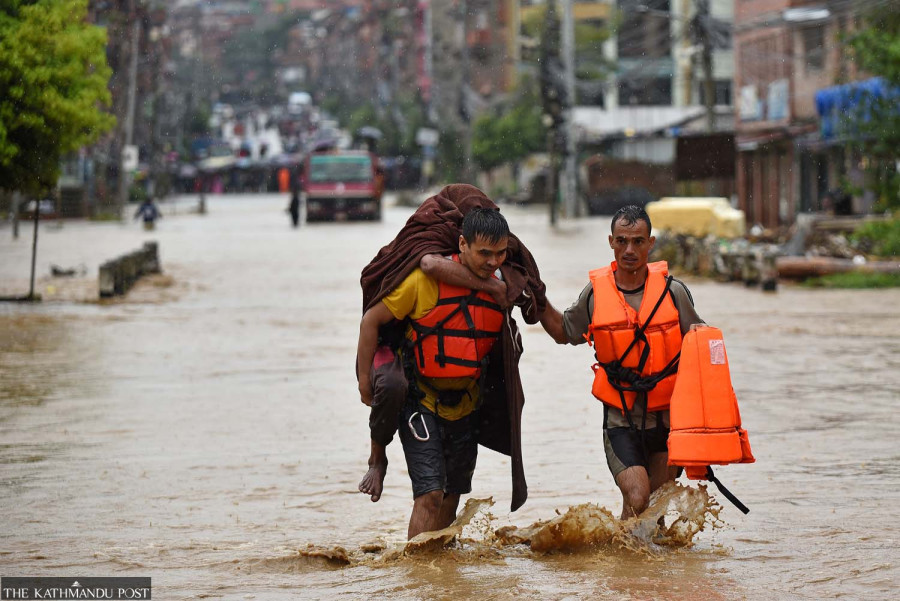Editorial
Murphy’s law
The botched handling of Saturday’s disaster badly exposes our uncaring top government officials.
On Saturday, massive rains left at least 64 people dead and countless more injured. It uprooted people from their homes and left thousands without phone lines and electricity. Economic damages alone were estimated at between $95 billion and $100 billion. Local disaster responders said that given the scale of the event, some deaths and destruction were inevitable, even with the best of preparations. The trail of devastation that Hurricane Helene has left in its wake in the southeastern United States is the worst in decades. On the same day, halfway across the world in Nepal, incessant rains and floods and landslides killed at least 170, injured another 100, while 68 went missing. In Kathmandu Valley alone, 37 people perished in the heaviest rains the valley has seen in 54 years. Police personnel and rescue workers were digging up debris in multiple locations in the country, in the fear that more people might be buried. Both in the southeastern US seaboard and Nepal, Saturday’s water-induced disasters can be attributed to unpredictable weather. Yet, at least in Nepal’s case, climate change is only a part of a much larger story of neglect.
Saturday’s tragedy in Nepal represents an egregious failure of the Nepali state to keep its citizens safe. Days in advance, the Department of Hydrology and Meteorology had been putting out reminders that the country was in for unprecedented rains. The message was endlessly broadcast through media platforms as well as each and every cell phone. Yet, when the tragedy struck, responsible government agencies seemed completely unprepared. Home Minister Ramesh Lekhak made a mockery of himself when he attributed the government’s failure to save four people who were stranded on their roof in Nakhu of Lalitpur to ‘poor visibility’ as a result of which choppers, supposedly, could not reach them. But then a good samaritan, Chaniklal Tamang, managed to rescue two of them by diving into the swollen Nakhu River. There could not be a better sign of the Nepali state’s incompetence. Not just incompetence though. The casual way high-ranking government officials like Prime Minister KP Sharma Oli, Deputy Prime Minister Prakash Man Singh and Home Minister Lekhak have responded to queries over the government’s handling of the crisis shows an utter disregard for the lives of common folks.
It was also galling that the police and army personnel deployed for rescue efforts, be it in Kathmandu or Dhading, reported having to work without basic equipment like raft jackets and rescue ropes. This suggests that even though water-induced disasters claim thousands of lives every year in Nepal, disaster preparedness and response have never been the state’s priority. It is easy to see why. Those in leadership positions in the government are too busy scheming to prolong their stay in power—when not working for various vested interests. Except during election time, seldom do they spend any time listening to people’s concerns. The country’s prime minister sending back from New York his smiling pictures with VVIPs while his country struggled with a national tragedy was not just a matter of poor optics and iffy judgment. In the eyes of the Nepali people, it was also an indication of his misplaced priorities.




 17.12°C Kathmandu
17.12°C Kathmandu












%20(1).jpg&w=300&height=200)

